Growing Dill Indoors can seem like a daunting task, conjuring images of sprawling outdoor gardens and endless sunshine. But what if I told you that you could enjoy the fresh, aromatic flavor of dill right from your kitchen windowsill, regardless of the season or your outdoor space? For centuries, dill has been cherished not only for its culinary uses but also for its medicinal properties, dating back to ancient Egypt where it was used to soothe digestive ailments. Today, we often take for granted the ease of access to herbs, but the ability to cultivate them ourselves, especially indoors, connects us to a rich history of self-sufficiency and resourcefulness.
In this article, I’m going to share some simple yet effective DIY tricks and hacks that will empower you to successfully grow dill indoors. Whether you’re a seasoned gardener or a complete beginner, these tips will help you overcome common challenges and create a thriving indoor dill garden. Imagine the satisfaction of snipping fresh dill to garnish your favorite dishes, knowing that you nurtured it from seed to sprig. With a little know-how and a few readily available supplies, growing dill indoors is not only possible but also incredibly rewarding. Let’s get started!
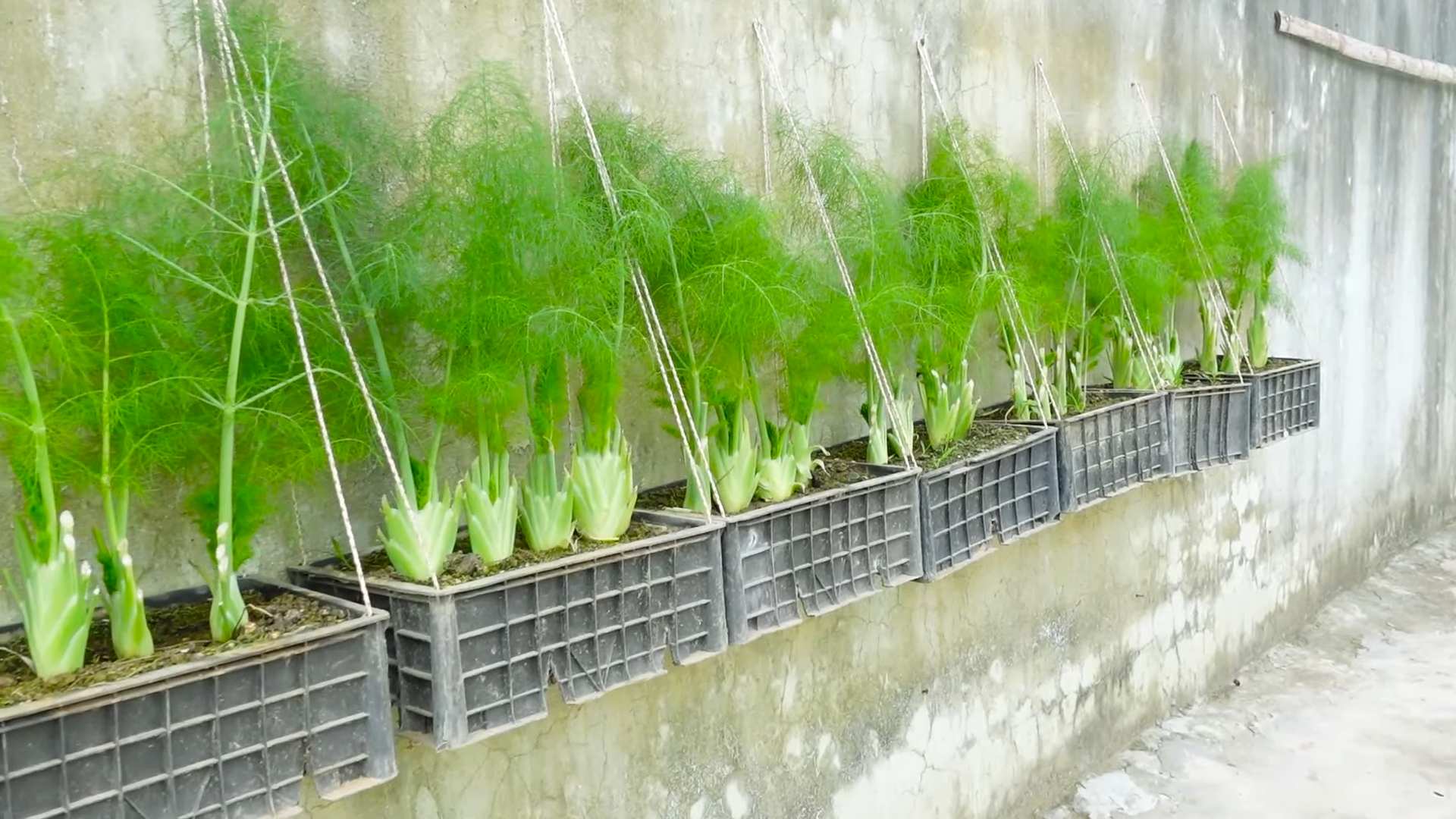
Growing Dill Indoors: A Beginner’s Guide to Fresh Herbs Year-Round
Okay, so you want fresh dill at your fingertips, even when the snow’s piling up outside? I get it! Dill is amazing, and having it readily available for pickles, dips, and all sorts of culinary adventures is a total game-changer. Growing it indoors is surprisingly easy, and I’m here to walk you through every step. Let’s get started!
Choosing the Right Dill Variety
Not all dill is created equal, especially when it comes to indoor growing. Some varieties are just better suited for containers and limited space. Here are a few of my favorites:
* Dwarf Dill: As the name suggests, this variety stays compact, making it perfect for smaller pots and indoor environments. It still packs a flavorful punch!
* Fernleaf Dill: This one is another great choice for containers. It’s known for its feathery foliage and relatively slow bolting (going to seed), which means you’ll get a longer harvest.
* Bouquet Dill: While it can get a bit taller than the others, Bouquet dill is a popular choice for its abundant leaves and strong flavor. Just make sure you have a slightly larger pot for this one.
Gathering Your Supplies
Before we dive into the planting process, let’s make sure you have everything you need. Trust me, having all your supplies ready beforehand will make the whole experience much smoother.
* Dill Seeds: Obviously! Choose a variety that suits your space and preferences. Make sure they are fresh seeds for better germination rates.
* Pot: Select a pot that’s at least 6-8 inches in diameter and depth. Good drainage is crucial, so make sure it has drainage holes.
* Potting Mix: Use a high-quality potting mix specifically designed for containers. Avoid using garden soil, as it can compact and hinder drainage. I personally love using a mix that contains perlite or vermiculite for added aeration.
* Grow Lights (Optional but Recommended): While dill can grow near a sunny window, grow lights will provide consistent and adequate light, especially during the darker months.
* Watering Can or Spray Bottle: For gentle watering.
* Small Shovel or Trowel: For planting the seeds.
* Seed Starting Tray (Optional): If you prefer to start your seeds indoors before transplanting.
Planting Your Dill Seeds
Alright, now for the fun part! Let’s get those dill seeds in the soil.
1. Prepare the Pot: Fill your pot with the potting mix, leaving about an inch of space at the top. Gently pat down the soil to remove any large air pockets.
2. Sow the Seeds: Dill seeds are small, so you don’t need to plant them too deep. Sprinkle the seeds evenly over the surface of the soil. Aim for about 2-3 seeds per inch.
3. Cover the Seeds: Lightly cover the seeds with a thin layer of potting mix (about 1/4 inch).
4. Water Gently: Use a watering can or spray bottle to gently moisten the soil. Be careful not to dislodge the seeds.
5. Provide Light and Warmth: Place the pot in a warm location (around 70°F or 21°C) with plenty of light. If you’re using grow lights, position them a few inches above the soil surface.
6. Maintain Moisture: Keep the soil consistently moist, but not soggy. Check the soil moisture daily and water when the top inch feels dry to the touch.
Germination and Early Growth
Patience is key! Dill seeds typically germinate within 7-14 days. Once your seedlings emerge, it’s important to provide them with the right conditions to thrive.
1. Thin the Seedlings: Once the seedlings have developed a few sets of true leaves (the leaves that look like miniature dill plants), thin them out so that they are spaced about 2-3 inches apart. This will give them enough room to grow and prevent overcrowding. Simply snip off the weaker seedlings at the soil line with small scissors.
2. Provide Adequate Light: Dill needs at least 6 hours of sunlight per day. If you’re growing it near a window, choose a south-facing window that receives plenty of direct sunlight. If you’re using grow lights, keep them on for 12-14 hours per day.
3. Water Regularly: Water your dill plants whenever the top inch of soil feels dry to the touch. Avoid overwatering, as this can lead to root rot.
4. Fertilize Sparingly: Dill doesn’t need a lot of fertilizer. However, you can give it a light feeding every few weeks with a diluted liquid fertilizer. Look for a balanced fertilizer with an N-P-K ratio of around 10-10-10.
Caring for Your Indoor Dill Plants
Now that your dill plants are growing, it’s important to provide them with the right care to keep them healthy and productive.
1. Temperature: Dill prefers temperatures between 60°F and 70°F (15°C and 21°C). Avoid exposing your plants to extreme temperatures or drafts.
2. Humidity: Dill doesn’t require high humidity, but it does appreciate a slightly humid environment. You can increase the humidity around your plants by placing a tray of water near them or using a humidifier.
3. Pest Control: Keep an eye out for common pests like aphids and spider mites. If you notice any pests, you can try spraying your plants with insecticidal soap or neem oil.
4. Support: As your dill plants grow taller, they may need some support to prevent them from flopping over. You can use small stakes or a tomato cage to provide support.
Harvesting Your Dill
The best part! You can start harvesting your dill leaves once the plants are about 6-8 inches tall.
1. Harvesting Leaves: Use scissors or pruning shears to snip off the leaves you need. Start by harvesting the outer leaves first, as this will encourage the plant to produce more new growth.
2. Harvesting Seeds: If you want to harvest dill seeds, allow some of the flower heads to mature and dry on the plant. Once the seeds are brown and dry, you can harvest them and store them in an airtight container.
3. Bolting: Dill tends to bolt (go to seed) in hot weather. Bolting can cause the leaves to become bitter. To prevent bolting, keep your plants well-watered and provide them with some shade during the hottest part of the day. You can also pinch off the flower buds as soon as they appear.
Troubleshooting Common Dill Problems
Even with the best care, you might encounter a few problems along the way. Here are some common issues and how to address them:
* Yellowing Leaves: This could be a sign of overwatering, underwatering, or nutrient deficiency. Check the soil moisture and adjust your watering accordingly. If you suspect a nutrient deficiency, try fertilizing your plants with a diluted liquid fertilizer.
* Leggy Growth: This is usually caused by insufficient light. Make sure your plants are receiving enough sunlight or grow light.
* Root Rot: This is caused by overwatering and poor drainage. Make sure your pot has drainage holes and avoid overwatering your plants.
* Pests: As mentioned earlier, keep an eye out for common pests like aphids and spider mites. Treat infestations promptly with insecticidal soap or neem oil.
Extending Your Dill Harvest
Want to keep that fresh dill coming? Here are a few tips for extending your harvest:
* Succession Planting: Plant new dill seeds every few weeks to ensure a continuous supply of fresh dill.
* Pinching Off Flower Buds: As mentioned earlier, pinching off the flower buds will prevent bolting and encourage the plant to produce more leaves.
* Freezing Dill: If you have more dill than you can use, you can freeze it for later use. Simply chop the dill leaves and freeze them in ice cube trays filled with water or olive oil.
* Drying Dill: You can also dry dill leaves for long-term storage. Hang the stems upside down in a cool, dry place until the leaves are completely dry. Then, crumble the leaves and store them in an airtight container.
Growing dill indoors is a rewarding experience that allows you to enjoy fresh herbs year-round. With a little bit of care and attention, you can have a thriving dill plant that provides you with a constant supply of flavorful leaves for all your culinary creations. Happy growing!
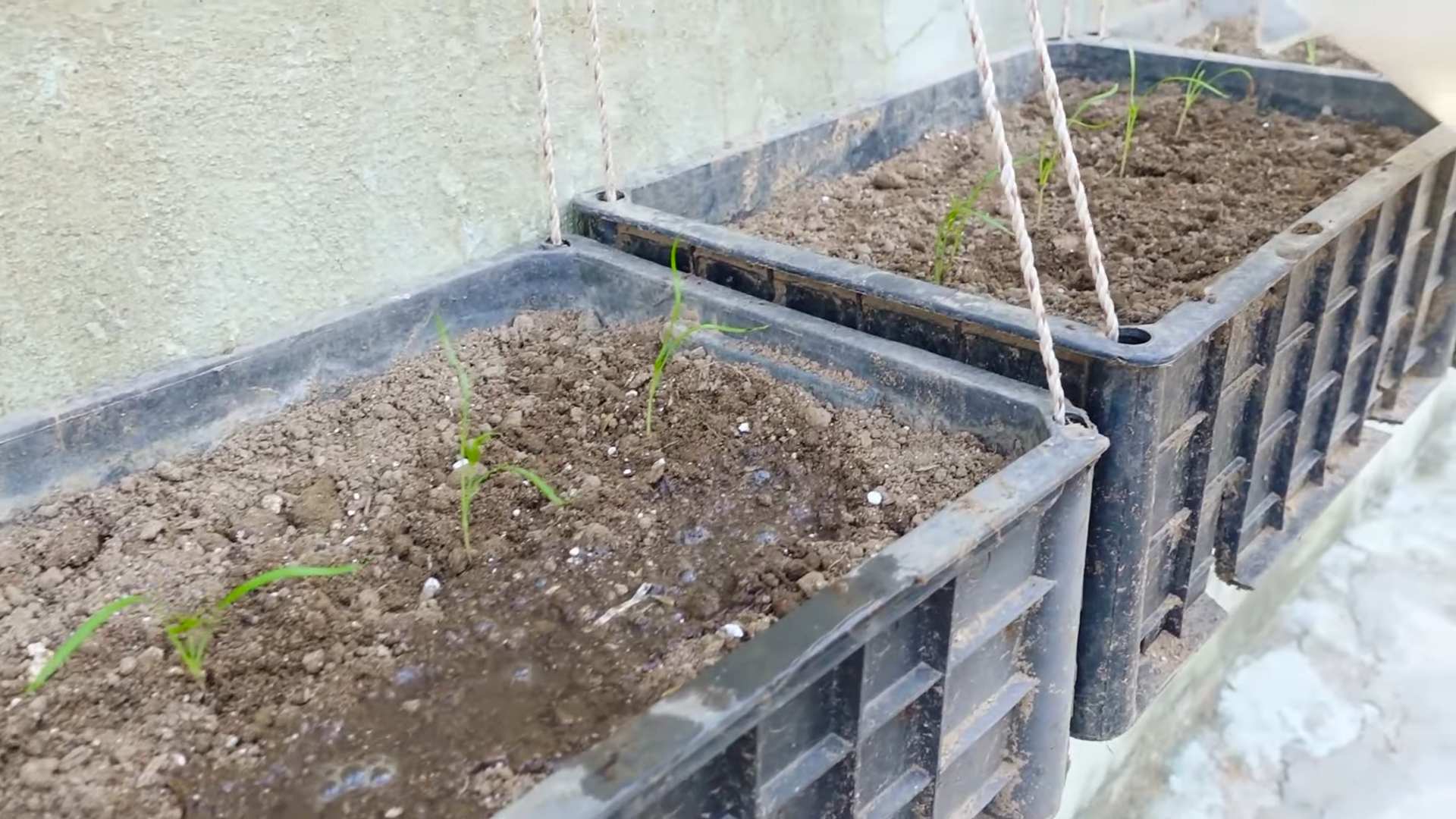
Conclusion
So, there you have it! Growing dill indoors is not only achievable, but it’s also a rewarding experience that brings a touch of freshness to your kitchen and a burst of flavor to your meals year-round. Forget those sad, wilted bunches of dill at the grocery store – with a little effort and the right setup, you can have a constant supply of vibrant, aromatic dill right at your fingertips.
Why is this DIY trick a must-try? Because it empowers you to control the quality and freshness of your herbs. You know exactly where your dill is coming from, what it’s been exposed to, and how it’s been cared for. This translates to superior flavor and a more sustainable approach to cooking. Plus, let’s be honest, there’s something incredibly satisfying about nurturing a plant from seed to harvest. It’s a little bit of nature brought indoors, a reminder of the seasons even when the weather outside is less than inspiring.
But the benefits don’t stop there. Growing your own dill indoors is also a fantastic way to save money. Think about how often you buy a bunch of dill for a single recipe, only to have the rest go to waste. With your own indoor dill garden, you can harvest only what you need, minimizing waste and maximizing your investment.
Ready to take your indoor dill growing to the next level? Consider these suggestions and variations:
* Succession Planting: Plant new seeds every few weeks to ensure a continuous harvest. This way, you’ll always have fresh dill available, even as older plants begin to bolt (go to seed).
* Companion Planting: Dill is a great companion plant for many vegetables, both indoors and out. Consider growing it alongside tomatoes, cucumbers, or lettuce to help deter pests and improve growth.
* Experiment with Varieties: There are several varieties of dill, each with its own unique flavor and growth characteristics. Try growing different varieties to find your favorite. Some popular choices include ‘Bouquet’ dill, ‘Dukat’ dill, and ‘Fernleaf’ dill.
* Hydroponic Dill: For a more advanced approach, consider growing dill hydroponically. This method involves growing plants without soil, using a nutrient-rich water solution. It can be a very efficient way to grow dill indoors, especially if you have limited space.
* Dill Seed Harvesting: Allow some of your dill plants to flower and go to seed. You can then harvest the seeds and use them as a spice in your cooking or save them for planting next season. Dill seeds have a stronger, more pungent flavor than the leaves.
Don’t be intimidated if you’re new to indoor gardening. Growing dill indoors is a relatively simple process, and the rewards are well worth the effort. Start small, be patient, and don’t be afraid to experiment. The most important thing is to have fun and enjoy the process.
We are confident that you’ll find growing dill indoors to be a delightful and rewarding experience. So, grab your seeds, potting mix, and a sunny spot, and get started today! We can’t wait to hear about your success. Share your experiences, tips, and photos with us in the comments below. Let’s create a community of indoor dill enthusiasts! Let us know what challenges you faced and what worked best for you. Your insights can help others succeed in their own indoor dill growing adventures. Happy growing!
Frequently Asked Questions (FAQ)
Q: What is the best type of dill to grow indoors?
A: While you can grow any type of dill indoors, some varieties are better suited for container gardening than others. ‘Bouquet’ dill is a popular choice because it’s compact and produces a large number of leaves. ‘Dukat’ dill is another good option, known for its strong flavor and slow bolting. ‘Fernleaf’ dill is a dwarf variety that’s perfect for small spaces. Ultimately, the best type of dill for you will depend on your personal preferences and the space you have available. Experiment with different varieties to find your favorite.
Q: How much sunlight does dill need when grown indoors?
A: Dill thrives in bright, direct sunlight. Ideally, it needs at least 6-8 hours of sunlight per day. If you don’t have a sunny window, you can supplement with grow lights. Place the grow lights about 6-12 inches above the plants and keep them on for 12-16 hours per day. Insufficient sunlight can lead to leggy growth and reduced flavor.
Q: What kind of soil should I use for growing dill indoors?
A: Dill prefers well-draining soil that is rich in organic matter. A good potting mix for dill is a blend of peat moss, perlite, and vermiculite. You can also add some compost to the mix to provide extra nutrients. Avoid using garden soil, as it can be too heavy and may contain pests or diseases.
Q: How often should I water my indoor dill plants?
A: Water your dill plants when the top inch of soil feels dry to the touch. Avoid overwatering, as this can lead to root rot. Dill prefers slightly dry conditions, so it’s better to err on the side of underwatering than overwatering. When you do water, water thoroughly until water drains out of the bottom of the pot.
Q: How often should I fertilize my indoor dill plants?
A: Dill doesn’t require heavy fertilization. However, you can fertilize your plants every 2-3 weeks with a diluted liquid fertilizer. Choose a fertilizer that is balanced and contains micronutrients. Avoid over-fertilizing, as this can lead to leggy growth and reduced flavor.
Q: How do I harvest dill from my indoor plants?
A: You can start harvesting dill leaves once the plants are about 6-8 inches tall. Simply snip off the leaves with scissors or pruning shears. Avoid cutting more than one-third of the plant at a time, as this can stunt its growth. You can also harvest the entire plant by cutting it off at the base.
Q: Why is my dill plant bolting (going to seed)?
A: Bolting is a natural process that occurs when dill plants are exposed to high temperatures or long days. When dill bolts, it produces flowers and seeds, and the leaves become less flavorful. To prevent bolting, keep your dill plants in a cool location and provide them with plenty of water. You can also pinch off the flower buds as they appear.
Q: How do I save dill seeds from my indoor plants?
A: If you want to save dill seeds, allow some of your plants to flower and go to seed. Once the seed heads are dry and brown, cut them off and place them in a paper bag. Allow the seeds to dry completely before storing them in an airtight container in a cool, dark place.
Q: My dill plant is attracting pests. What should I do?
A: Dill can be susceptible to pests such as aphids, spider mites, and whiteflies. If you notice pests on your plants, try spraying them with a strong stream of water to dislodge them. You can also use insecticidal soap or neem oil to control pests. Be sure to follow the instructions on the product label carefully.
Q: Can I grow dill indoors year-round?
A: Yes, you can grow dill indoors year-round as long as you provide it with the right conditions. This includes plenty of sunlight, well-draining soil, and regular watering and fertilization. With a little care, you can enjoy fresh dill from your indoor garden all year long.


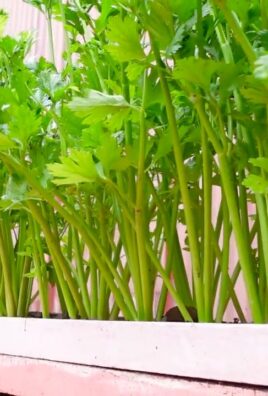
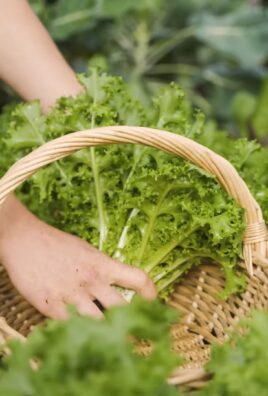
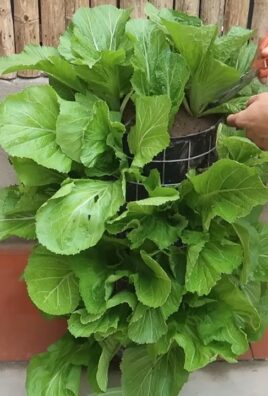
Leave a Comment